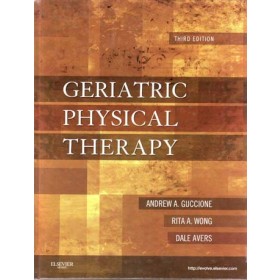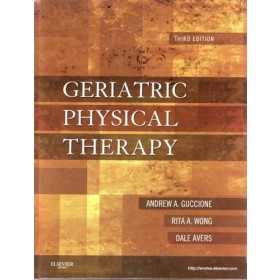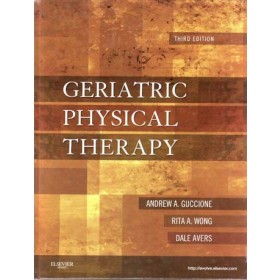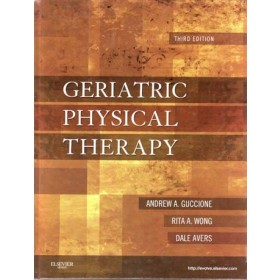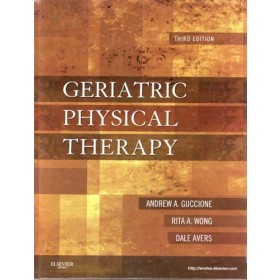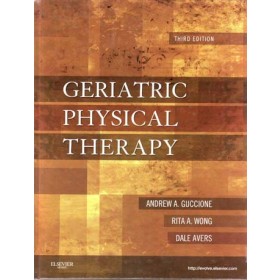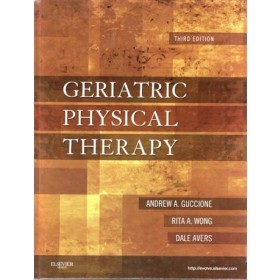Details
Share A Course: Geriatric Physical Therapy: Module 4
SKU: 764S
Do you already have access to the reading materials and only need the testing materials? Are you planning to Share A Course with someone else who already has the reading materials?
This package includes only the testing materials for the course and not the required reading materials.
Module 1: covers foundations of geriatric care, demography, mortality, and morbidity of older adults, the physiology of age-relate and lifestyle-related decline, geriatric pharmacology and exercise and physical activity for older adults.
Module 2: covers contexts for examination and interventions including patient management principles, sensory and cognition changes in the older adult, evaluation of the acute and medically complex patient, motivation and patient education and the families of older adults.
Module 3: covers evaluation, diagnosis and the plan of care including assessments of aerobic capacity, endurance, joint mobility, muscle performance, motor control, posture, ambulation, functional mobility, balance and falls.
Module 4: covers special problems and interventions including impaired integumentary integrity, urinary incontinence, pain management, lower-limb orthoses and prosthetic management for older adults with lower limb amputations.
Module 5: covers special populations and the continuum of care including wellness for the aging adult, home health, hospice, the senior athlete and older adults with developmental disabilities.
Course Length: 15.0 contact hours
Instructional level: Intermediate
This package contains the testing materials only for Module 4 and NOT the required reading materials.
Geriatric Physical Therapy: Module 4
Course Goals and Objectives:
Course Goals: This course is intended to instruct the student through self-paced study on the foundations of treating a geriatric adult specifically for impaired integumentary integrity, urinary incontinence management, pain management, and lower extremity orthotics and prosthetics.
Student Objectives:
At the end of this course, the student will be able to:
1. Correctly identify the vascular integrity of the epidermis and its regeneration rate.
2. Identify the typical duration of a herpes zoster infection.
3. Analyze the causes of scabies.
4. Differentiate between the proliferative phase of wound healing and other phases.
5. Demonstrate comprehension of the role of vitamins in wound healing.
6. Understand friction force as it relates to formation of a pressure ulcer.
7. Discriminate between the different staging of pressure ulcers.
8. Analyze a proper reassessment time for pressure ulcer formation in the home care setting.
9. Select the location and primary treatment course for venous insufficiency ulcers.
10. Analyze the most common cause of arterial insufficiency.
11. Evaluate several different classification systems for diabetic ulcers.
12. Examine the contraindications for sharp debridement of wounds.
13. Discriminate the need for hyperbaric treatment for pressure ulcers.
14. Identify the muscles of the levator ani muscle group.
15. Evaluate four different pelvic floor muscle contraction-grading scales.
16. Evaluate the use of electrical stimulation in the treatment of stress incontinence in women.
17. Outline the optimal voiding schedule for an individual undergoing behavioral intervention for bladder training.
18. Examine common pharmacologic interventions for urge incontinence.
19. Evaluate several surgical options for treatment of female stress urinary incontinence.
20. Contrast the normal progression of low back pain as it relates to advancing age.
21. Analyze the characteristics of four standardized pain instruments.
22. Select which assessment tool is best used to rate pain in individuals with cognitive deficits such as dementia.
23. Analyze the interaction of a TENS unit and implantable cardioverter defibrillator.
24. Analyze the use of supportive devices to prevent glenohumeral subluxation.
25. Compare the relationship between advancing age and stroke.
26. Analyze the correct positioning of a longitudinal arch support of the foot.
27. Analyze the function of a rocker bar in an orthotic.
28. Outline the function of a plantar flexion stop in an AFO.
29. Evaluate the correct fit of an AFO on a client.
30. Analyze the functional outcome of transtibial amputees.
31. Evaluate the most important component of a prosthesis.
32. Evaluate functional outcomes of four different prosthetic foot options.
33. Evaluate knee flexion contracture as it relates to fabrication of a prosthetic device.
34. Evaluate the potential for skin breakdown in an individual with transtibial amputation.
